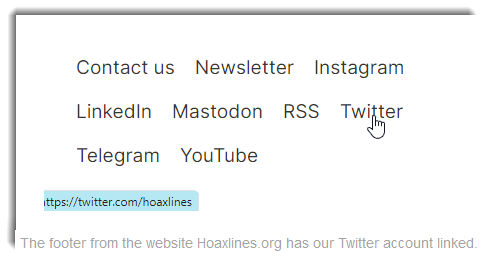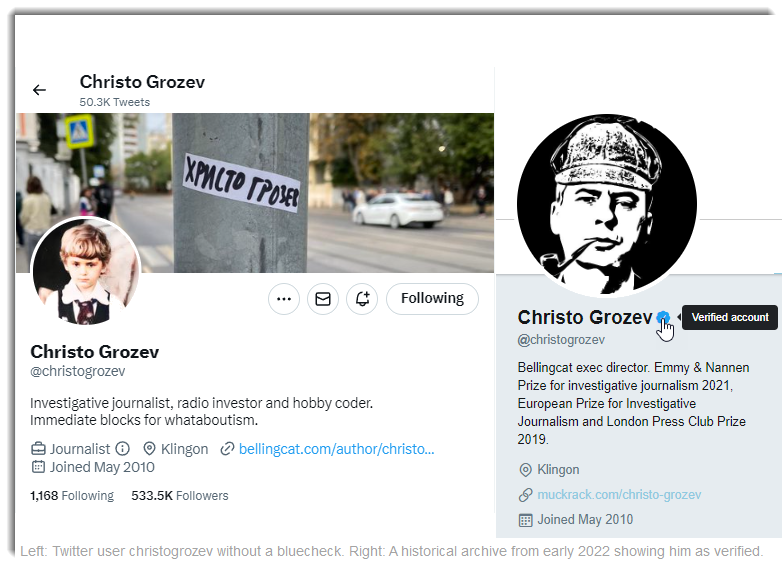How to verify your Twitter account in a post-official era
Twitter’s policy change means that bad actors may be more able to believably impersonate accounts. If you want to signal to readers or check the authenticity of an account, apply or look for these.
Twitter recently discontinued its legacy account verification, which means users must establish their authenticity and credibility on the platform in other ways. Unfortunately, even if users follow the suggestions, these will only help if a reader attempts to see if the account is real. Verified checkmarks as they were before the 2022 sale to Elon Musk were imperfect. Still, they signaled to readers without an additional step if an account was likely real.
Twitter’s policy change means that bad actors may be able to impersonate accounts more believably right now. If you want to signal to readers or check the authenticity of an account, apply or look for these methods.
List your Twitter handle on an official website.
For those with an official website that lists their social media accounts, consider adding an explicit notice about your official Twitter handle on that site. This clear and visible statement will direct visitors to your genuine Twitter profile. This method is actually used by the alternative platform Mastodon to verify users.
Cross-verify using an account on another platform.
Confirm your official Twitter handle through a verified account on another platform like Instagram or Facebook. By announcing your Twitter account on a verified profile, you can reassure your audience that they are engaging with an authentic account. Although Facebook is expanding its verification as a paid service, they only verify accounts that match the owner’s legal name. If you have a verified account on Facebook, you can mention your real Twitter handle.
Instagram’s verification policy, which is the same as Facebook’s because they have the same parent, no longer requires you to be “notable.” However, it does still verify that the person is who they claim to be. The policy reads:
An Instagram account with a verified badge next to its name now means that Instagram has confirmed that it is the authentic presence for that person or brand. Previously, the verified badge also required the person or brand to be notable and unique. You may still see users with a verified badge that represents our previous eligibility requirements.
Check what verification means on different platforms because some may have more credibility than others. Platforms like Telegram verify using other platforms’ decisions to grant verification. Telegram will also verify people using an undisputed Wikipedia page. One can see how this would be less credible than a platform that requires an ID and a name matching that ID.
Use the Internet Archive to show you were a legacy verified account.
If your account was verified before the recent sale of Twitter, you might be able to show that. While this method may not work for users who have changed their handles, it can help confirm the authenticity of many formerly verified accounts.
Let’s use Christo Grozev, the founder of Bellingcat, as an example. Mr. Grozev is no longer verified on Twitter, but as Mr. Grozev has taught us, the internet is forever. An archive from early 2022, before the sale of Twitter, shows that he was a verified account.
Mention your Twitter handle in content you create.
To help your audience identify your genuine account, include your Twitter handle in any content you create. For example, you can include it in the footer of your Substack newsletter. This strategy generates more evidence for readers to verify your Twitter account.
Government agencies and elected officials are pretty good about this, so figures like that can be easily checked if they keep their information current. It’s not bad for other organizations to consider whether this would be appropriate because it can help prevent impersonation.
Share links to bylines or media mentions.
Link to old bylines, interviews, or profiles in the media where your Twitter account is listed alongside your profile. You can show that a credible third party has publicly associated a specific Twitter account with you. Here’s how this could look.
Hoaxlines was mentioned and hyperlinked in Rolling Stone. On the Hoaxlines website, as shown above, a Twitter account has been linked in the footer. Apologies, this one is a bit tedious.
Individual authors can link to content that includes their social media accounts. For example, I recently wrote an article published in Tech Policy Press. They included my Twitter handle in the author profile.
Participate in live events like Twitter spaces.
This option won’t be for everyone, but speaking on Twitter spaces can offer reassurance if your audience knows your voice.
These aren’t ideal options, but they may help.
Always double-check the account you are engaging with if someone is behaving unusually or in any manner that might be deemed newsworthy. We may be more likely to fall for a fake if we want to see what a bad actor is portraying. For example, if they are impersonating someone you don’t like in an unflattering light, you could be more likely to accept it unquestionably.
Without official Twitter verification, there’s not much we can do that doesn’t require an additional step. Still, it may help someone catch a misidentification faster.





